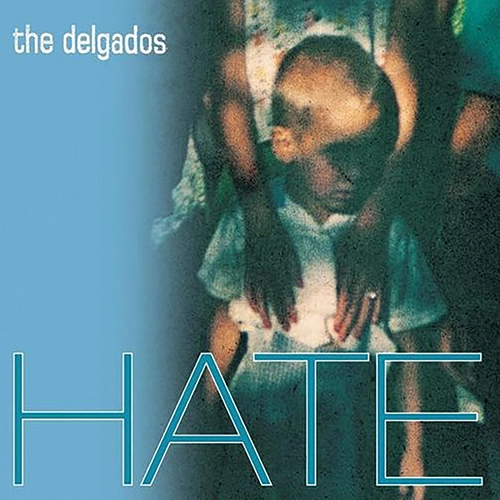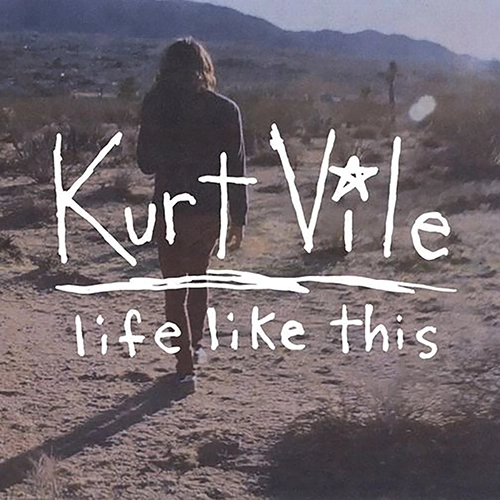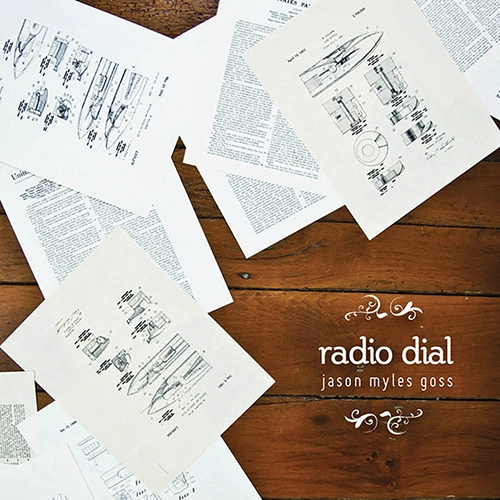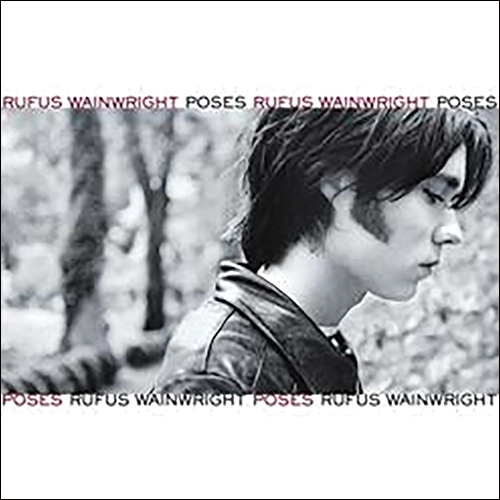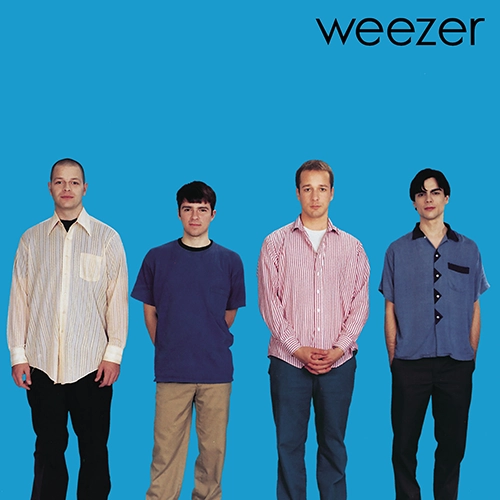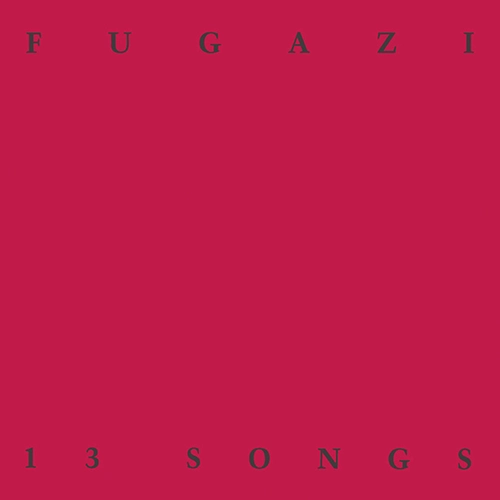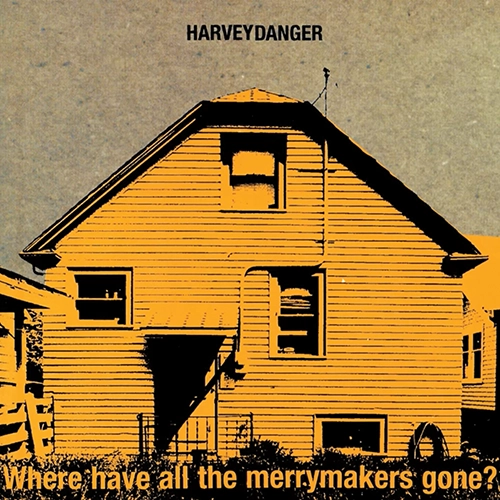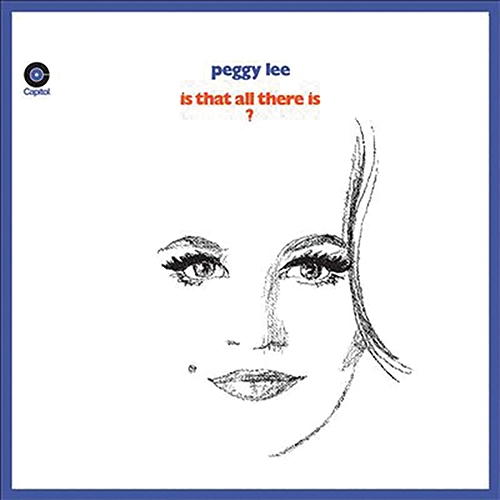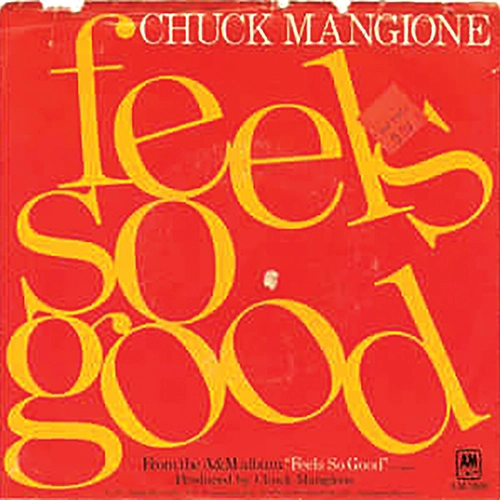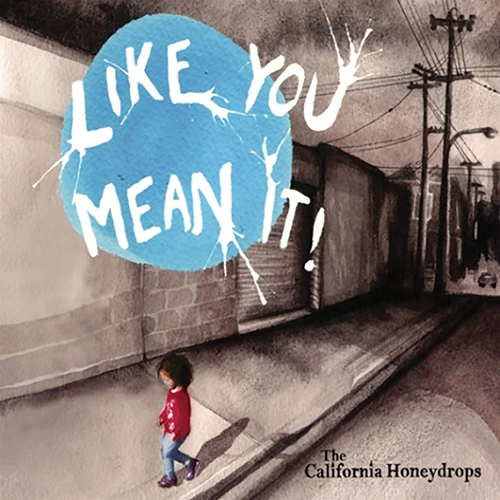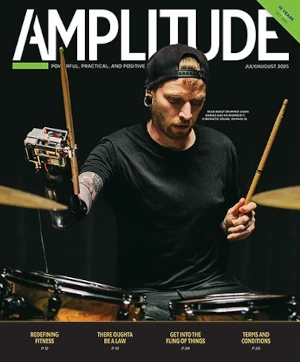After I lost my leg, my grief had a soundtrack.
by Diana Theobald
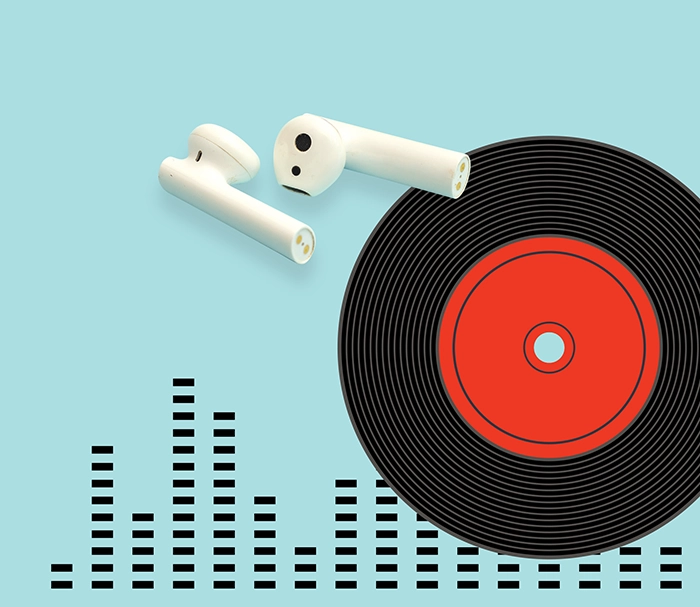
I’ve recently become a Dungeons & Dragons Dungeon Master. It’s a very important role. The Dungeon Master (or DM, for short) makes the game. They set the scene. They narrate the action. They play all the villains and side characters. And they pick out the music.
Recently, during a goblin battle set to Blondie’s “One Way or Another,” one of my players exclaimed, “Must we always have music playing?!” My eyes narrowed into slits as I cued up the theme to The Good, the Bad, and the Ugly and glared him into submission, ash dangling off my imaginary cigarillo.
Music says more than words. I can describe the dungeon’s cobwebs, its mustiness, and the smell of rot, but it’s that dissonant chord on the organ that sends the chill to your bones.
After my amputation, I used music to capture the dissonant chords of my grief. And there were lots of them. I didn’t want to grieve; I just wanted to be happy—and if I couldn’t be happy, I at least wanted to feel numb. I certainly didn’t want to cry all the time, but I didn’t seem to have any control over it. I would burst into tears at the most inconvenient times. Above all, I was eager to get back to normal, or whatever “normal” would mean for me now.
The year before my accident, after a gnarly breakup, I’d started keeping a music journal. Anytime I heard a song that spoke to how I was feeling at that moment or that got stuck in my head, I saved it to a playlist. And it helped. So during my recovery from limb loss, I decided to start a new playlist to map out my feelings.
I experimented with different “happy” playlists, hoping the perfect mix might snap me out of sadness and back to normal. It didn’t work. Trying to cut through a depressive episode with The Jackson 5 was like trying to cut through cardboard with a preschooler’s safety scissors. I was looking for a shortcut through grief, but there is no shortcut. Whether I liked it or not, the soundtrack to my life was more Billie Eilish than Bruno Mars. But after two years of tracking my emotions with music, something magical happened. The grief playlist became a happy playlist. Or, more accurately, a gratitude playlist.
Whenever I felt low I could listen to it, and it would guide me back to an optimistic place. Yes, it took me through all the hurt and forced me to feel it again—but it took me through the healing as well. There’s a story about a guy stuck at the bottom of a hole whose friend jumps down with him. “Why did you jump down? Now you’re stuck here too!” the guy asks. And his friend answers: “Because I’ve been here before. I can show you the way out.” When I’m in that hole, my playlist shows me the way out.
Here’s a reflection on my playlist, track by track. It’s quite personal; I don’t expect every song to resonate with you the way it does with me, but the feelings they evoke might ring true. Be forewarned, my tastes incline toward obscure artists and songs. I take great pride in being what Spotify Wrapped calls “Eclectic.” It’s my dad’s fault: His idea of a banger is the fourth movement of Shostakovich’s Fifth Symphony. At least my songs have lyrics.
To hear any song, click on the title or the album-cover image.
Thank U
Alanis Morissette
“How about getting off of these antibiotics…”
Morissette wrote this after a year-and-a-half-long break from music, filled with introspection and lots of yoga. The song poses a series of questions—“How ’bout me not blaming you for everything?” “How ’bout unabashedly bawling your eyes out?” “How ’bout not equating death with stopping?”—that I hadn’t yet thought to ask myself, as I was still just trying to get off of those antibiotics.
But they must have been bubbling up in the background. I didn’t fully appreciate it at the time, but this song laid out a road map for my grief. The destination wasn’t going to be happiness, though I’d have happy moments throughout. No, the goal was to someday feel thankful for everything I was going through.
The Light Before We Land
The Delgados
“And when I feel like I can feel once again, let me stay a while. Soak it in a while. If we can hold on, we can fix what is wrong. Buy a little time for this head of mine.”
The strings and soaring harmonies sound like what Dilaudid felt like. They’re interrupted by grungy, ear-stinging guitar riffs, which sound like what my phantom limb pain felt like.
The song itself takes place just before the end of a relationship. The writing’s on the wall, but the couple is in denial, just like I was when I first landed in the hospital. As I struggled with my grief months later, I got weirdly nostalgic for those early hospital days before I understood what was happening, when I had a pain pump that released a rush of opiates into my bloodstream every hour and put me back to sleep.
Life Like This
Kurt Vile
“Wanna live a life like mine? Well, I’ve been doing it all the time. To do so, you gotta roll with the punches. Jump from the sweetest to the toughest of tough love.”
People complimented me on how well I handled losing a leg, saying they never could have coped as well. I think people would be surprised at what they can handle. Like Vile says, “Have you got what it takes? Well, I think you might.”
Disability can be a charmed existence. We’re rare and special, kind of like celebrities: People give us good seats, let us park where we want, and feature us in their advertising. They look to us for inspiration. The highs are high.
But when the lows come, you realize “special” can also mean “alone.” People thought I was coping well, but I was only sharing myself at my best. I wasn’t about to let them see my dark side—that would be like a celebrity leaving the house without huge sunglasses and a hat. This song helped me feel less alone in my lows. Would I have what it takes to live a special life? Kurt Vile thought I might.
Open Your Eyes
School of Seven Bells
“Open your eyes love ’cause you’ve been sleeping. It’s getting hard to bear, watching you all alone. I know your heart is broken and you’ve been weeping, but I’ve been waiting here patiently for too long.”
School of Seven Bells was two people, Benjamin Curtis and Alejandra Deheza, best friends and soulmates. While they were writing this album, Curtis was diagnosed with lymphoma. He died soon after. Deheza finished the album herself as a final love letter to Curtis, and you can feel her grief in this song.
I imagined her singing this to me, encouraging me to stop sleeping so much, stop avoiding my friends, and live life as I used to. But I also imagined she was singing to herself, reassuring herself that she’d fall in love again. And I was grateful to share in her grief. Misery loves company, and this song is beautiful, transcendent company.
Hospital Shirt
Jason Myles Goss
“This medicine’s a bitch. It ain’t no walk in the park. Any more of this stuff I’ll probably glow in the dark.”
After months of combing songs about relationships for insights about amputation, I found this tune that speaks directly to the suck of being in a hospital. It’s so refreshing to hear someone tell it exactly how it is. Goss is cranky but optimistic, with plenty of fight left—just as I was.
By the time I get to this point in the playlist, I’m usually all cried out and ready to look forward. “Hospital Shirt” gently carries me from a place of tearful retrospection into the next phase: integration.
Cigarettes and Chocolate Milk
Rufus Wainwright
“If I should buy jellybeans, have to eat them all in just one sitting. Everything it seems I like is a little bit sweeter, a little bit fatter, a little bit harmful for me.”
I gained weight after my amputation. It started with me gaining back the weight I’d lost in the hospital, but then I couldn’t turn it off. For years before my accident, I’d denied myself all these delicious foods—dairy, gluten, trans fats. Pre-accident, I drank kale smoothies with lemon and ginger. Post-accident, I could not. I didn’t survive a 40-foot fall to drink salad, not when pancakes existed. I felt out of control, though. Why is the good stuff bad for you?
I had also rushed into dating again, even though I was still recovering physically and emotionally. Wainwright acknowledges that we’re all a little out of control, giving into our cravings but still deserving of love. He ends the song by asking his paramour to “please be kind if I’m a mess.” Like it or not, we all come packaged with this warning.
The World Has Turned and Left Me Here
Weezer
“The world has turned and left me here, just where I was before you appeared.”
Returning to real life after a medical emergency is hard. Everybody else kept moving while you were stuck in place. You’re expected to run, but you’ve barely mastered walking.
When I was laid off from work after my final surgery, I felt like a wounded elephant, abandoned by the herd. So I found comfort by reconstituting my old herd from high school. The world had turned and left me behind, but at least Weezer was still around to hang out with.
Bad Mouth
Fugazi
“You can’t be what you were, so you better start being just what you are.”
Losing your job is worse than losing your leg. It sounds ridiculous, but I stand by it. This point in the playlist corresponds to the point in my journey where I’d hit the snooze button too many times on School of Seven Bells’ gentle encouragement to “open my eyes.” I needed punk band Fugazi to yell, “The time is now! It’s running running running out!”
I was tired of wallowing. There was no going back. This was my life. I could choose to spend it however I wanted…
Flagpole Sitta
Harvey Danger
“They cut off my legs, now I’m an amputee, goddamn you! I’m not sick, but I’m not well. And I’m so hot ’cause I’m in hell.”
…so I chose to spend it being angry. I wasn’t okay, but that was okay. I started taking writing classes and spent hours each day writing furiously in my journal, working through my emotions. I leaned into therapy and got on antidepressants. I finally let myself feel my feelings.
That’s when I started to feel the power of this playlist. I listened to it regularly and worried that revisiting it was holding me back from healing. The truth was the opposite. Revisiting the emotions is what helped me heal. Each time I listened, I felt further away from “Thank U.” I was progressing. That said, it didn’t feel like the playlist was done. Would I ever be done grieving?
I also realized the power of other amputees. Many amputees have shared their journeys through memoirs, interviews, and their social feeds. I collected as many accounts as I could. Through them, I saw there was a new normal waiting for me. I wasn’t there yet, but I was close.
Is That All There Is?
Peggy Lee
“Is that all there is? If that’s all there is my friends, then let’s keep dancing. Let’s break out the booze and have a ball if that’s all there is.”
Although this song is about disillusionment, it has gone farther than any other in making me want to grow old. Around this time, I was running into a fair number of stories about amputees and other disabled folk dying by suicide, which made sense to me at the time. And that scared me.
Lee’s final verse is about “ending it all,” but she dismisses the idea, calling it “that final disappointment.” Life may be disappointing, but death could only be worse. She’s good where she is: dancing, boozing, and having a ball.
So why shouldn’t I be good where I am? I want to grow old. I want to become a grizzled old hag and be completely unimpressed by a technologically advanced world, and dance and booze with my own crew of Golden Girls. I hope I make it well into my 90s before dying peacefully in my sleep, after an easy hospice where I’m at last reunited with my old friend, the pain pump.
Leggy Blonde
Flight of the Conchords
“Goodbye…. Goodbye-ee-eye… leggy, leggy, leggy, leggy, leggy, leggy, leggy, leggy, leggy, leggy, leggy, leggy, leggy, leggy, leggy, leggy… leggy blonde: goodbye, goodbye.”
This song was my silly way of finally saying goodbye to my leg. It was also a reminder that technically, I was even leggier post-amputation. Most girls live their entire lives with only two legs. I’d already had five—the leg I lost, the leg I kept, my everyday prosthesis, my high-heel foot, and my running blade. Highlight my hair and this song might as well have been about me.
Reaching the “Flight of the Conchords” phase was an important milestone. It meant I was finally able to laugh at the tragedy that befell me and reinvent it as farce, a profound joke that only the hippest people are in on.
Feels So Good
Chuck Mangione
“Morning’s here! The morning’s here! Sunshine is here. The sky is clear. The morning’s here! Get into gear! Breakfast is near. The dark of night has disappeared.”
If you’ve watched Friends as often as I have, it’s impossible to hear this instrumental track without subconsciously inserting these words. I woke up one day with this song stuck in my head and listened to it nonstop for a week. So easy. So cheesy! I couldn’t get enough of it. The melodic flugelhorn lures you in, and then the guitar and drums kick in with that vaguely Latino beat, and then it’s a vortex of disco, jazz fusion, adult contemporary, and all those other gloriously trite genres that used to play in grocery stores and dentist’s offices before the new millennium.
As a teenager, I could never envision the day that I would welcome smooth jazz into my heart. But as I turned 30 with a bum ankle, a stiff back, and heart arrhythmia, there was no doubt that I had become an adult. A contemporary adult. And like clockwork, “Feels So Good” felt so, so good. It seemed like the perfect song to close out the playlist. But then I heard…
Like This, Like That
The California Honeydrops
“Be glad you woke up. Be glad you broke up. Be glad you don’t know what happens next. Be glad you’re walking. Be glad you’re talking. Because who knows just what happens next?”
OK, this was the perfect song to close things out. Two years after I started the playlist, this song got me to gratitude, just as “Thank U” foretold.
I no longer need this playlist to get me through leg-related bad moods, but I make a point of listening to it every year around my ampuversary to honor what I went through. It’s become a ritual. I still feel the feelings, but their intensity lessens each year, as the memories fade into flat snapshots.
The gratitude grows, however. Day to day, it’s easy to forget what I’ve endured and what I’ve accomplished. My playlist reminds me. I survived. I grieved. I came out the other side. And I’m still young. I still have plenty of dancing and boozing left to do, and countless more playlists to create. I can’t be what I was, but I can be just what I am. And if that’s all there is, I’ll take it. Because who knows just what happens next?
Diana Theobald is a content diversity consultant. She has held roles in creative development and diversity & inclusion at Warner Bros. Discovery, Marvel, DreamWorks Animation, and NBCUniversal. Subscribe to her Substack, The Crawl, at thecrawl.substack.com.
Album covers from top: Maverick Records; Amazon.com; Amazon.com; Abbey Drucker/Creative Commons; jasonmylesgoss.bandcamp.com; Rufus Wainright; weezerpedia.com/wiki; fugazi.bandcamp.com; Amazon.com; allmusic.com; genius.com/Flight of the Conchords; A&M Records – discogs.com; cahoneydrops.com



